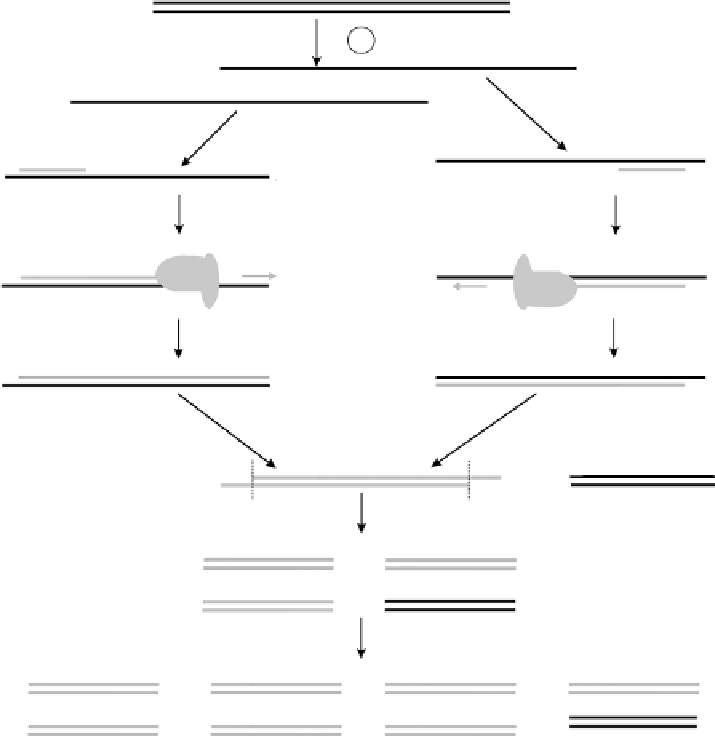Biomedical Engineering Reference
In-Depth Information
5
3
3
5
1
3
5
3
5
2
5
3
5
3
3
5
3
5
P
5
3
3
3
5
5
3
P
3
5
5
3
5
3
3
5
3
5
4
5
3
5
3
3
5
3
5
5
3
5
3
3
3
5
5
5
3
3
5
3
3
5
5
5
3
3
5
3
3
5
3
3
5
3
3
5
5
5
5
3
5
3
5
3
3
5
3
3
5
3
3
5
5
5
5
FIGURE 11.10
Schematic drawing of the PCR cycle. (1) Denaturing at 95ºC. (2) Annealing at 55ºC.
(3) Synthesizing at 72ºC (P
Polymerase). (4) The fi rst cycle is complete. The two resulting DNA strands
make up the template DNA for the next cycle, thus doubling the amount of DNA duplicated for each new
cycle. Source: http://en.wikipedia.org/wiki/Polymerasechainreaction (see Plate 3 for color version).
came up with a new technique of combining RCA with immunochemistry, whereby an
oligonucleotide primer is attached to an antibody covalently. After bonding with the
antigen, the antigen can be detected due to amplifi cation resulting in a long chain with
repeated sequences that remains attached to the antibody. All these are done in the
presence of circular DNA and nucleotides as shown in Fig. 11.11.
11.2.4.2 Signal amplifi cation
Signals obtained by methods like tyramide signal amplifi cation can enhance signal
intensity, reduce background fl uorescence, and then increase sensitivity.









Search WWH ::

Custom Search